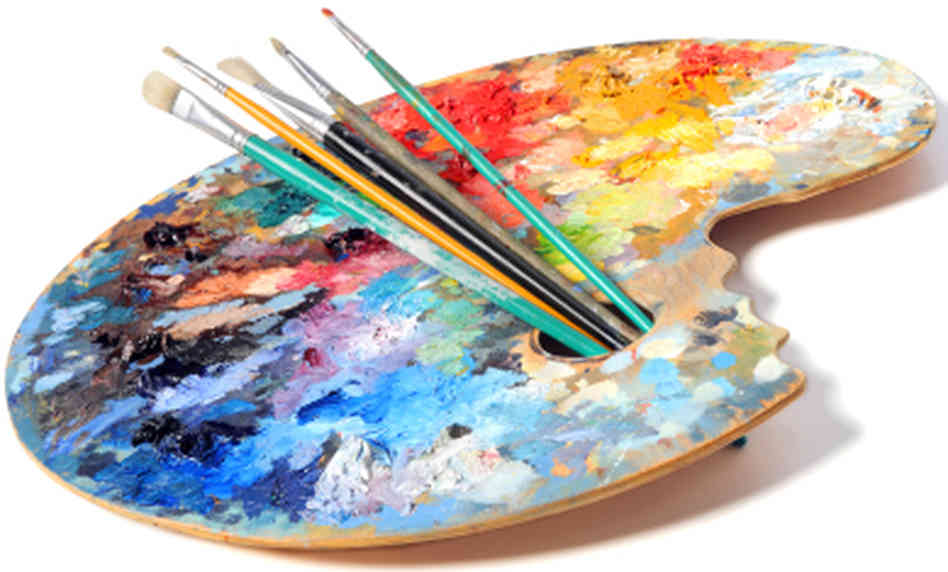Introducing one of the most Intriguing Trump Art Parts of the Years
Introducing one of the most Intriguing Trump Art Parts of the Years
Blog Article
Looking Into the Diverse Globe of Artistic Expression: From Surrealism to Abstract Realism
In the realm of creative expression, from the dreamlike landscapes of surrealism to the intricate play of light and type in abstract realistic look, musicians have constantly pressed the borders of creativity and creativity. As we check out the complex globe of art, we are presented with a tapestry of styles, strategies, and viewpoints that challenge our understanding and prompt reflection.
Surrealism: Releasing the Subconscious
Surrealism, a progressive artistic motion of the 20th century, explored the midsts of the subconscious, unveiling a world of dream-like imagery and non-traditional associations. Pioneered by artists like Salvador Dali, René Magritte, and Joan Miró, Surrealism sought to challenge the traditional methods of seeing and recognizing art. Through techniques such as automatism and dream analysis, Surrealist artists aimed to touch right into the subconscious mind to reveal hidden realities and wishes.
Among the crucial elements of Surrealism was the focus on the unreasonable and the incredible. By incorporating unanticipated components in their jobs, Surrealist musicians intended to create a feeling of disorientation and shock in the viewer. This disruption of logic and factor was indicated to prompt a deeper exploration of the subconscious and the enigmas of the human mind.
Abstract Realism: Redefining Perception
Challenging conventional artistic borders, Abstract Realistic look redefines perception through the blend of identifiable aspects with abstract forms. This cutting-edge technique to art integrates the representational accuracy of realistic look with the innovative freedom of abstraction, supplying customers a distinct visual experience that triggers them to question their assumption of truth.
In Abstract Realism, musicians aim to record the significance of their subjects while likewise infusing their collaborate with a sense of depth and intricacy through abstract components. By blending the accustomed to the unfamiliar, these musicians invite target markets to engage with their items on multiple levels, encouraging them to discover the nuances of texture, shade, and form.
Cubism: Fragmenting Truth
Making use of fragmented point of views and geometric kinds, Cubism transformed the imaginative representation of truth in the very early 20th century. Developed by Pablo Picasso and Georges Braque, Cubism looked for to test traditional concepts of viewpoint and representation. By damaging down things and figures into geometric shapes and offering them from numerous viewpoints all at once, Cubist artists aimed to catch the significance of the subject as opposed to its actual appearance. This method not only deconstructed fact however additionally emphasized the flatness of the canvas, paving the method for future abstract art activities.

Cubism can be classified right into 2 major stages: Analytical Cubism, identified by single color design and detailed, fragmented kinds; and Artificial Cubism, which included collection components and brighter shades right into the structures. With these unique phases, Cubism influenced not only painting yet additionally design, sculpture, and look at here design. trump art. Its impact resounded throughout the art globe, motivating musicians to check out new ways of interpreting and representing the world around them
Expressionism: Feelings on Canvas
Discovering the midsts of human emotions through meaningful and brilliant brushstrokes, Expressionism became a profound imaginative motion in the early 20th century. Unlike previous art activities that focused on depicting the exterior world, Expressionism explored the interior realm of the musician's psyche, intending to evoke raw feelings and provoke natural actions why not check here from viewers.
Expressionist musicians, such as Edvard Munch, Egon Schiele, and Emil Nolde, declined traditional ideas of appeal and realistic look for misshaping type and shade to convey subjective sensations. The use of exaggerated brushwork, vibrant colors, and altered numbers helped produce a sense of anxiousness, alienation, or passion in their works.
Among the most renowned instances of Expressionism is Munch's "The Scream," which catches the intense anxiousness and despair of contemporary life via its swirling, distorted figure versus a blood-red skies. Through their mentally billed works, Expressionist artists looked for to test conventional creative standards and provide a window right into the stormy depths of the human soul.
Contemporary Art: Progressing Viewpoints

Among the defining qualities of modern art is its constant development and capacity to adapt to transforming cultural landscapes. Musicians are significantly integrating modern technology into their practice, obscuring the lines between the digital and physical worlds. This combination of tools permits cutting-edge means of storytelling and engaging with target markets in a more interactive way.
Additionally, contemporary art usually serves as a platform for social discourse, dealing with pushing problems such as identity, politics, and the environment. Artists are using their job to stimulate important discussions and provoke idea, losing light on the intricacies of the globe we reside in. As point of views remain to develop, contemporary art remains a significant and vibrant force in forming our cultural landscape.
Conclusion
Finally, the globe of imaginative expression includes a wide variety of activities and designs, each with its own unique approach to sharing definition and emotion. From surrealism's exploration of the subconscious to abstract realistic look's redefining of assumption, and from cubism's fragmentation of reality to expressionism's representation of emotions, art remains to progress and challenge point of views - trump art. Contemporary art reflects the ever-changing globe we live in, offering brand-new ways to analyze and comprehend check this site out the complexities of our fact
As we check out the multifaceted globe of art, we are presented with a tapestry of designs, methods, and viewpoints that test our understanding and provoke reflection. Its effect reverberated throughout the art world, motivating artists to check out new means of standing for the world and translating around them.

Report this page